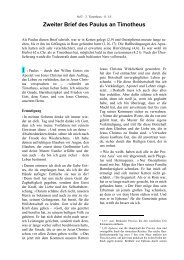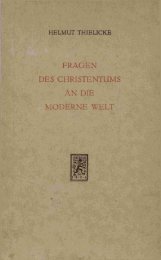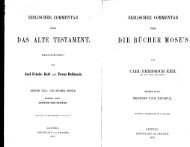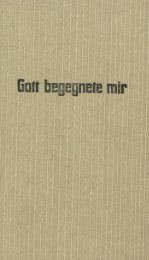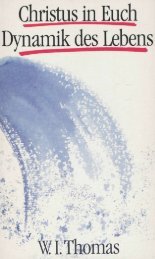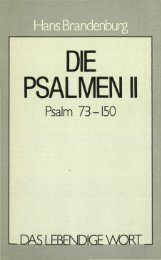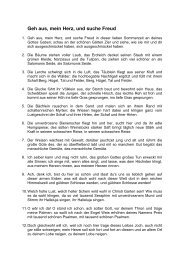You also want an ePaper? Increase the reach of your titles
YUMPU automatically turns print PDFs into web optimized ePapers that Google loves.
The entire molecule, consisting of 10,000 atoms,<br />
has a molecular weight of about 68,000 (compare:<br />
H 2 O: 18, CO 2 : 44, insulin: 41,000). It is precisely<br />
folded in such a way as to obtain its characteristic<br />
near-spherical shape (diameter: 5.5 nm,<br />
1 nm = 10 -9 m). Each of its four equal sized parts<br />
is also roughly spherical.<br />
only diffuse into body tissues when it is physically<br />
dissolved. But most of the oxygen transported<br />
by the blood is bound to Hb, maximally in the<br />
ratio of four oxygen molecules per molecule of<br />
Hb. It follows that one gram of Hb can absorb<br />
1.36 ml oxygen (Hüfner’s number). The average<br />
man has 15.3 g of Hb per 100 ml blood, and a<br />
woman has 14.5 g Hb, so that each 100 ml of a<br />
man’s blood can carry 20.8 ml O 2 (19.7 ml in the<br />
case of a woman), when all the heme is fully oxygenated.<br />
Hb thus transports 70 times as much<br />
oxygen as that which can be physically dissolved<br />
in the serum. The total amount of Hb in 5.5 litres<br />
of blood is between about 7<strong>45</strong> and 820 g.<br />
Some noteworthy numbers:<br />
Large lymphocyte<br />
When oxygenated, the colour of the blood changes<br />
from dull purplish (the venous blood depleted of<br />
oxygen) to a bright scarlet (the colour of oxygenrich<br />
arterial blood). Oxygenated Hb is known as<br />
oxy-hemoglobin. The theoretical oxygen capacity<br />
of the 5 – 6 litres of blood in the body is between<br />
1,100 and 1,400 ml, but only 25 % of this<br />
amount is actually utilised. In an equal volume of<br />
water (5 – 6 litres) at 20 °C only 150 – 180 ml<br />
oxygen can be dissolved (and even less at 37 °C).<br />
When carbon monoxide (CO) is inhaled, it<br />
replaces oxygen, because it binds more tightly<br />
with Hb. This explains the high toxity of even<br />
small concentrations of CO in the air.<br />
A fraction of the oxygen is transported by the<br />
blood in the form of dissolved O 2 , as is the case<br />
with other respiratory gases. Although this quantity<br />
of oxygen (0.3 ml per 100 ml blood) is<br />
minute, it is quite important, since oxygen can<br />
The total number of red blood<br />
corpuscles:<br />
25 million million<br />
That is,<br />
– in one cubic millimetre (mm 3 ): 5,000,000<br />
– in one drop of blood: 250,000,000<br />
– in one cubic cm (cm 3 ): 5,000,000,000<br />
Total surface area of all red blood cells: 3,800 m 2<br />
Total number of white blood cells:<br />
35,000 million<br />
Total number of platelets:<br />
1.25 million million<br />
To get some visual grasp of the immense number<br />
of erythrocytes in our body: If all these red blood<br />
cells were stacked one on top of the other, the<br />
stack would reach a height of 40,000 km, the circumference<br />
of the earth at the equator. If all 25<br />
million million red blood corpuscles were laid<br />
down next to one another, we would have a<br />
190,000 km long band which would be nearly<br />
five times the circumference of the earth.<br />
Red blood cell differences before and after<br />
birth: Concerning the transport of oxygen in the<br />
blood, two requirements must be met right<br />
throughout the three different stages of the<br />
human being (embryonic, fetal and adult) considered<br />
here. All parts of the body must be supplied<br />
with the necessary amounts of oxygen; similarly,<br />
the CO 2 resulting from oxidation needs to be<br />
transported away. Each of these various developmental<br />
stages has differing circulatory and<br />
metabolic situations, so the capacity of the blood<br />
to transport these gases needs to be different in<br />
61




